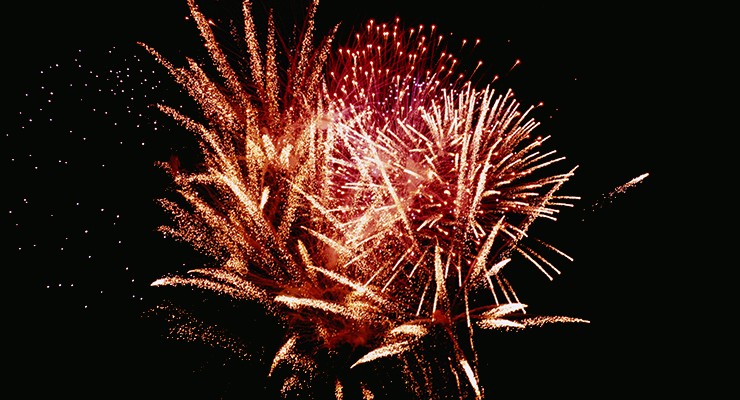The Science of Fireworks
June 17, 2015
Historical information tells us that Americans used fireworks – or pyrotechnics – to celebrate our nation’s birthday beginning when we turned one. Watching a fireworks display, we often don’t think about the science behind it and instead enjoy the lights, colors, sounds, shapes and effects. But what makes up those components? Associate professor Chris Kim in the Schmid College of Science and Technology helps us understand.
Pyrotechnics is the overall field and discipline of designing things that will explode and produce light. There are a couple different components to fireworks – one is the part that causes it to lift, and the other is the part that causes the explosion and the color, which come together. When you light a firework, there are two fuses: one is the quick-burning fuse that causes the launch, and the second is the slow-burning fuse that causes the explosion when the firework vessel has reached the height of its vertical arc.valium online no prescriptionvalium online without prescriptionbuy valium no prescriptionbuy ambien no prescriptiondiazepam online without prescription online pharmacybuy phentermine no prescriptionbuy tramadol online no prescriptionsoma online pharmacybuy ativan online without prescriptionklonopin online no prescription
How are the colors determined?
Colors are produced as a result of combining specific elements:
- Red is created with strontium
- Orange is created with calcium
- Yellow is created with sodium chloride (common table salt)
- Green is created with barium
- Blue is created with copper
- Purple is created with both copper and strontium
- Silver and white are created with combinations of magnesium and aluminum
“An interesting point about the quality of fireworks is that copper salts tend to be relatively unstable, and they are very difficult to preserve and ignite at exactly the right temperatures,” noted Dr. Kim. “Therefore, blue fireworks are the most difficult to pull off effectively. So, many say that the quality of a fireworks show can be gauged by the intensity of the blue fireworks, and also the purple fireworks.”
How does the color process work?
The colors are based on the different combinations of electrons, protons and neutrons that make up each atom in the different elements. When you excite electrons in an atom, they emerge from a lower, stable state to a higher, less stable state. This process doesn’t last very long because the heat and energy required to sustain them dissipates and the electrons return back to their stable state. When an electron goes from a high energy state to a low energy state, it gives off energy at a very specific, consistent wavelength. This electronic transmission is what causes the emission of light that we see. Those transmissions are always from a specific higher state to a specific lower state for certain elements and that is why it gives a consistent color. For example, every strontium explosion will produce effectively the same shade of red because we are seeing the same electronic transmission.
How are the sounds created?
There can be different types of sounds in fireworks. The loud “boom” sound occurs when the explosion ignites in the main part of the firework, releasing a large amount of energy into the air and causing the air to expand faster than the speed of sound. This shock wave is commonly known as a sonic boom, such as when a supersonic jet goes by. The shrieking or squealing sound is created when the ignition in a partially filled cylinder causes the entire cylinder to vibrate at a certain frequency.
How is the explosion created?
To create the explosion, metals are embedded in a specific chemical composition making up the material that is called the “star” in the firework. A star is basically a lump of clay or similar material, which is embedded in the compound that is going to cause the explosion and the color. Once the firework reaches the top of its arc, the stars ignite and explode, producing variations of light, sound and effects of the firework.
The compound that produces fuel is potassium nitrate, which is naturally occurring and has been used in pyrotechnics dating back to the earliest known written recordings of fireworks. Mixing it with charcoal and sulfur will cause the combustion. That mixture explodes at a rate of about 3 meters per second, so when you are watching your next fireworks display, you will know it is exploding at a rate of nearly nine feet per second!
How are the shapes created?
There are now fireworks that explode in different shapes, such as a heart or a smiley face. These are achieved by the stars and how the metal salts are embedded into them. They can be embedded in a specific pattern so when they explode, they will produce that pattern at a large scale. If they are embedded randomly, then they will explode in the sphere we commonly see.
The basic chemistry and science of fireworks has been more or less the same since they were first created. So the areas to improve on in the future are the intensity of the colors and the variety of the colors, as well as the different combinations of colors – e.g., the transition of one color transforming into another.
Safety is important when it comes to fireworks. Have fun, but stay safe! For more information, visit the National Council on Fireworks Safety at www.fireworksafety.com
